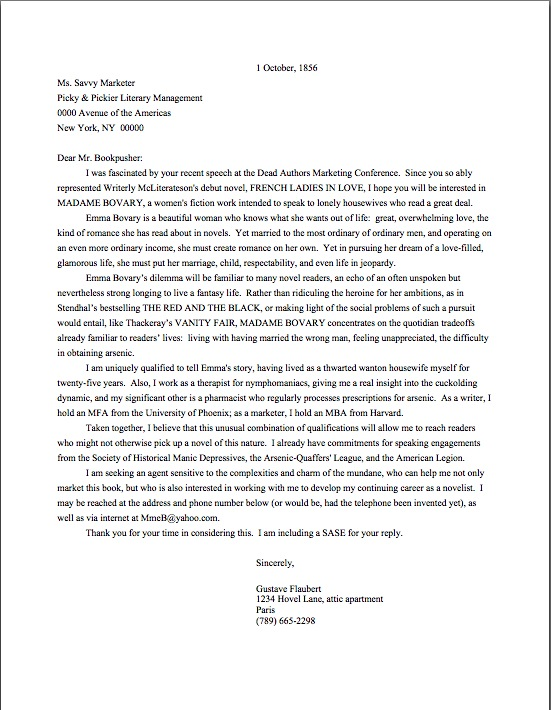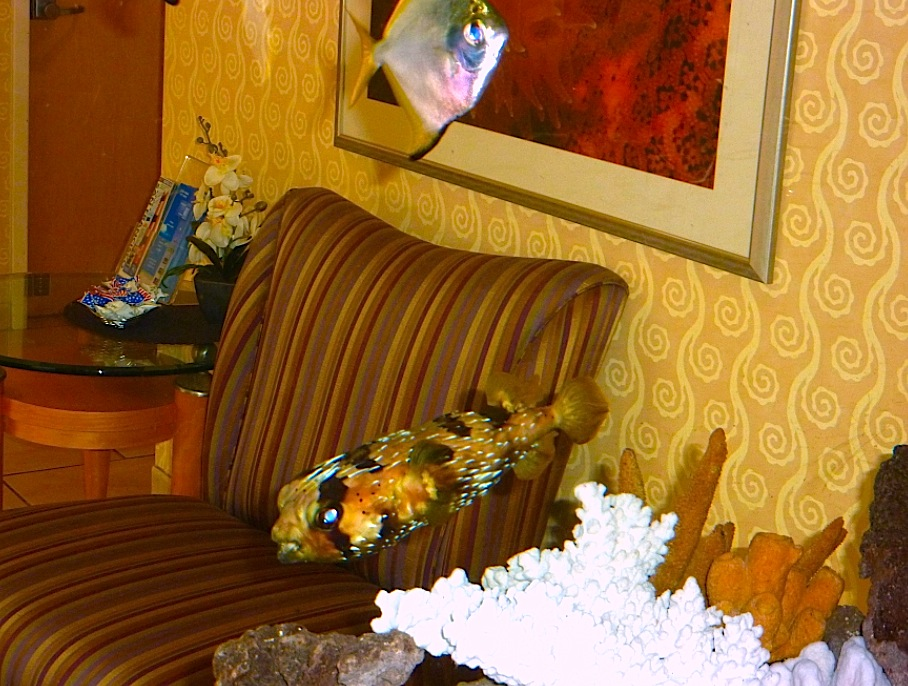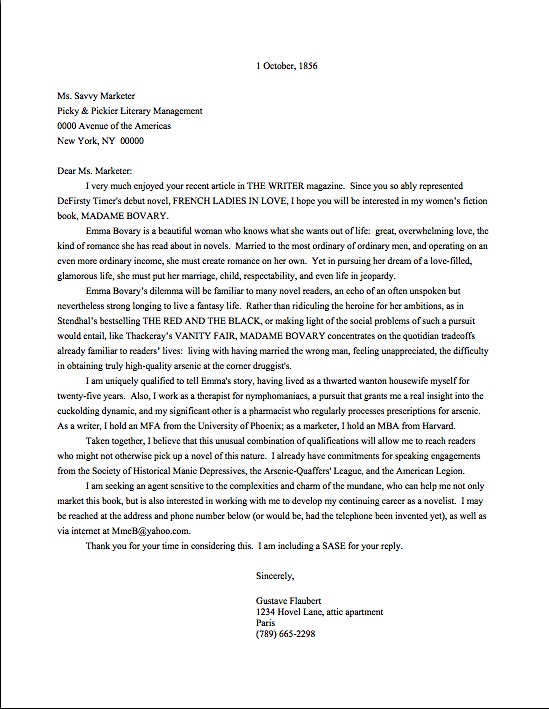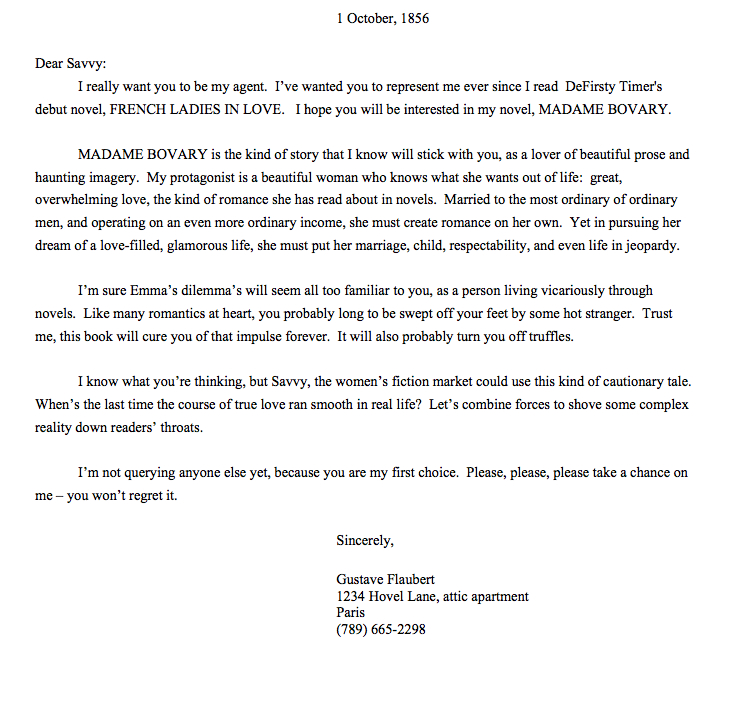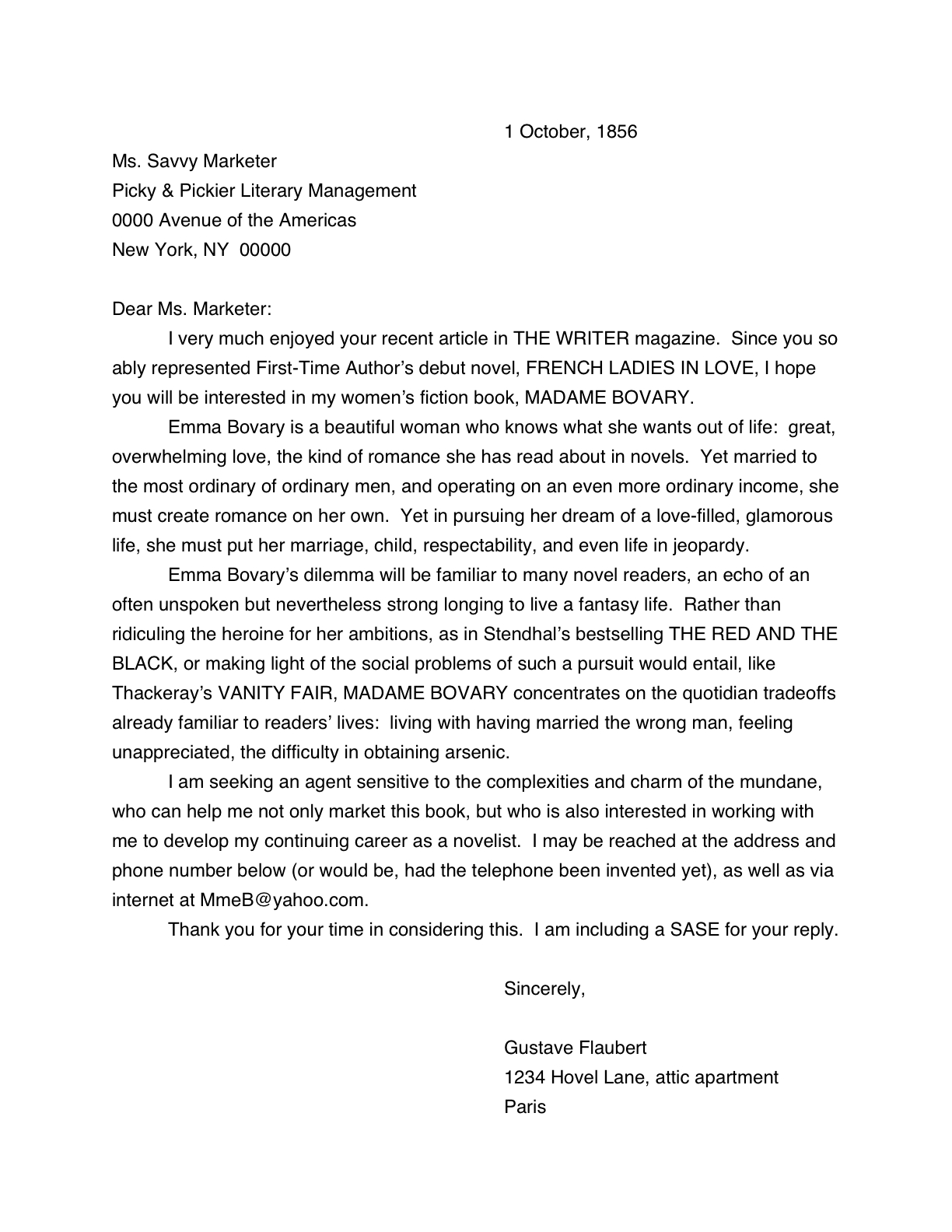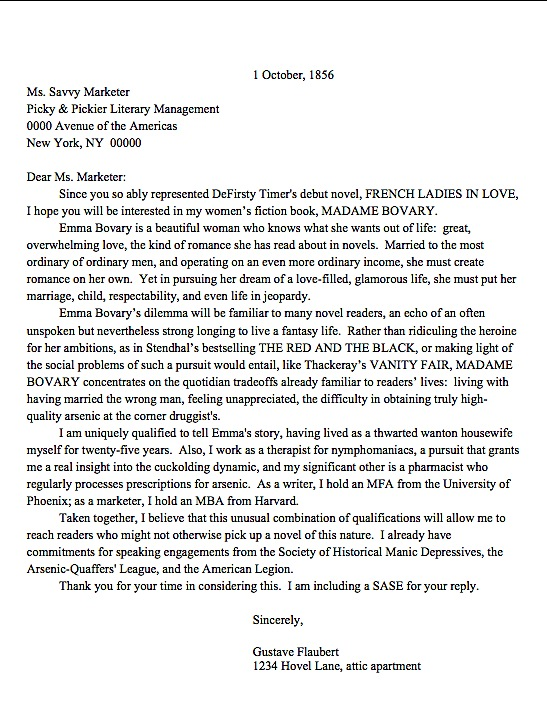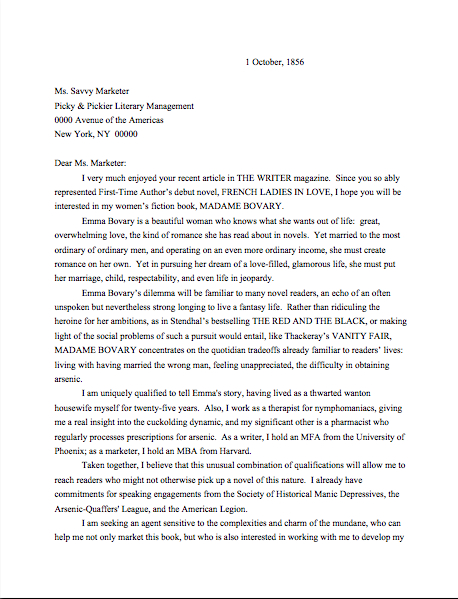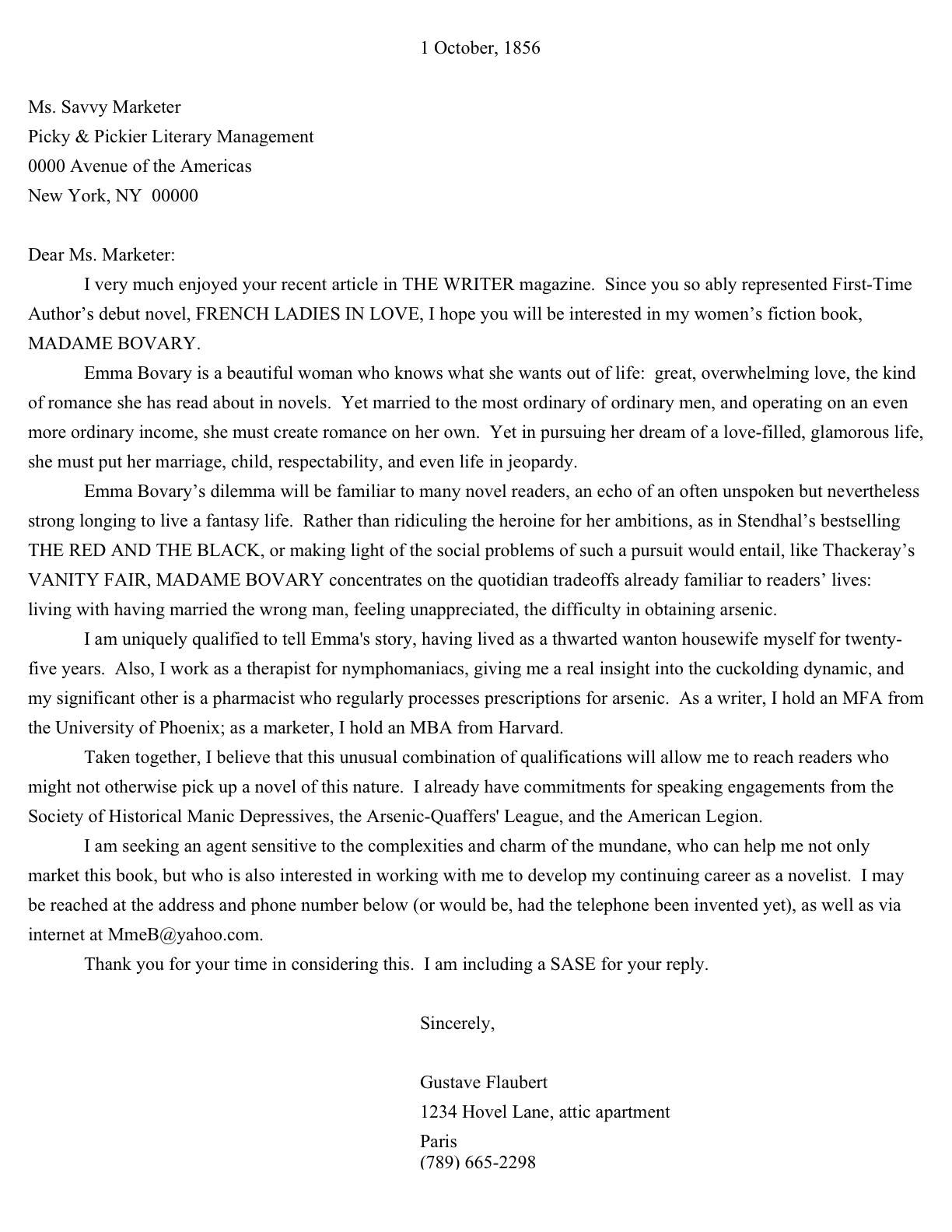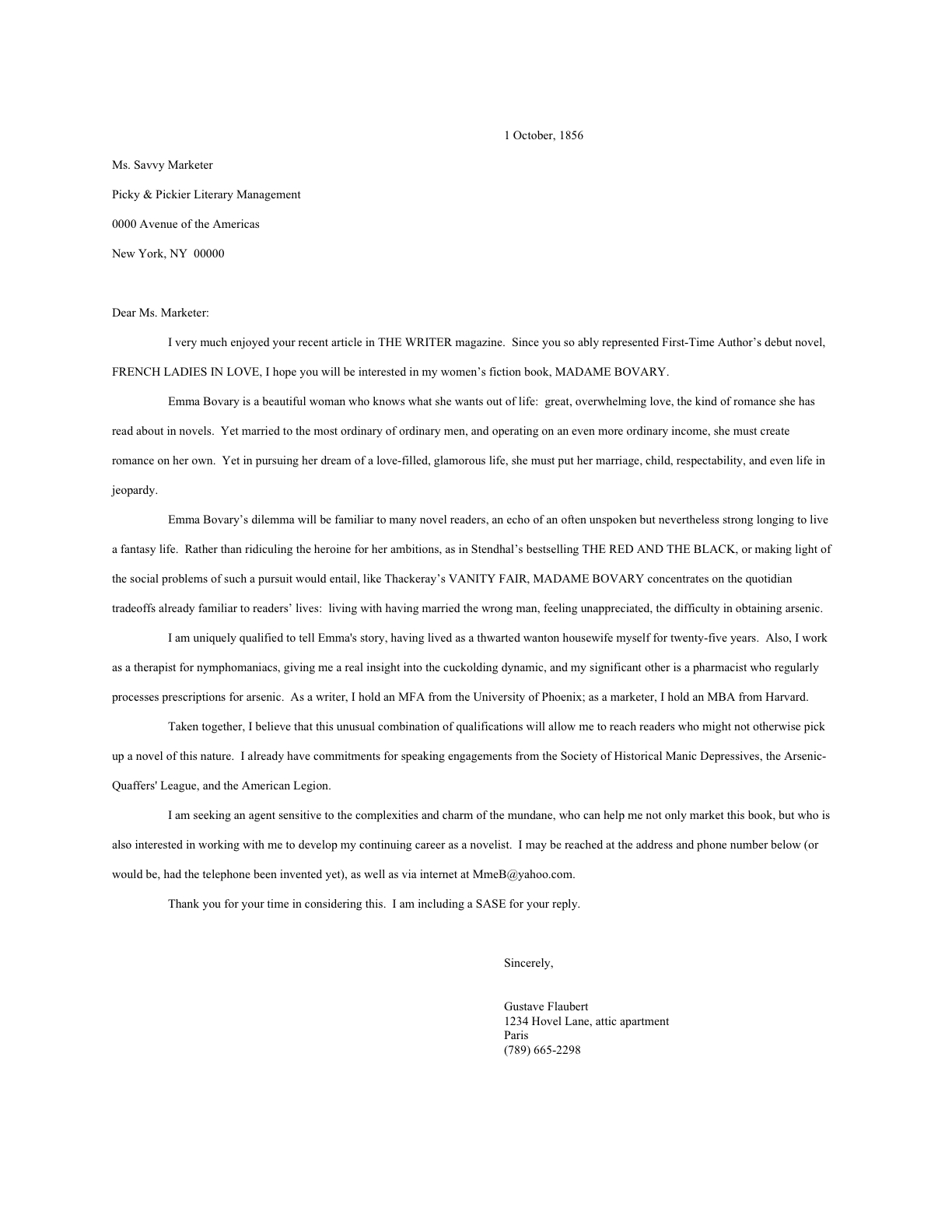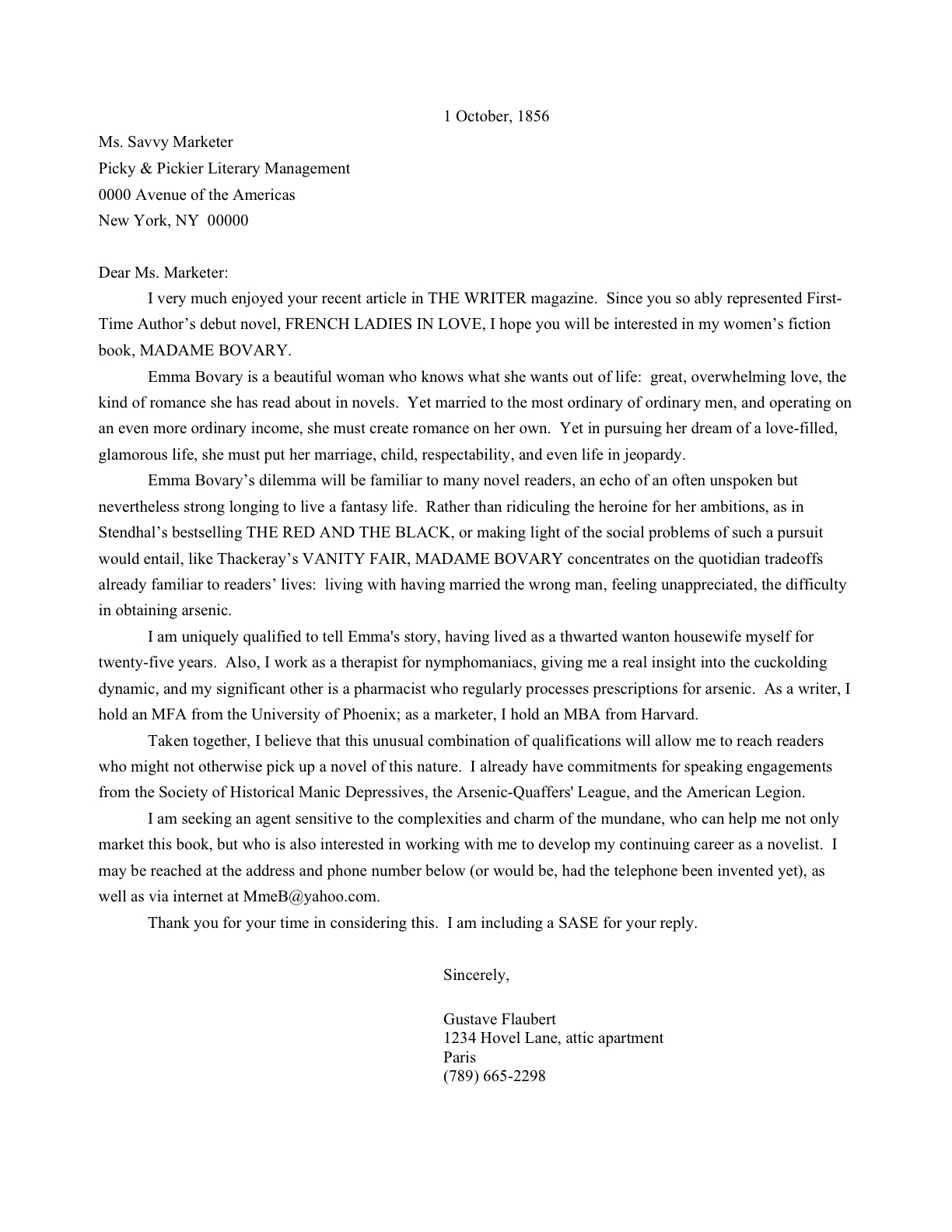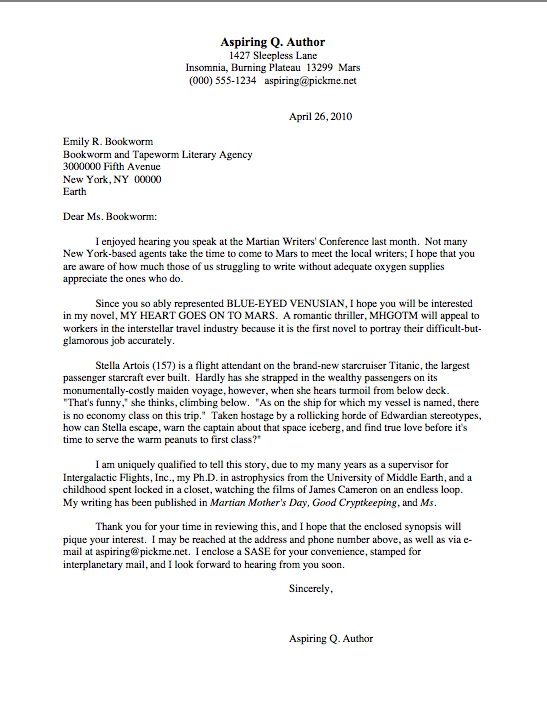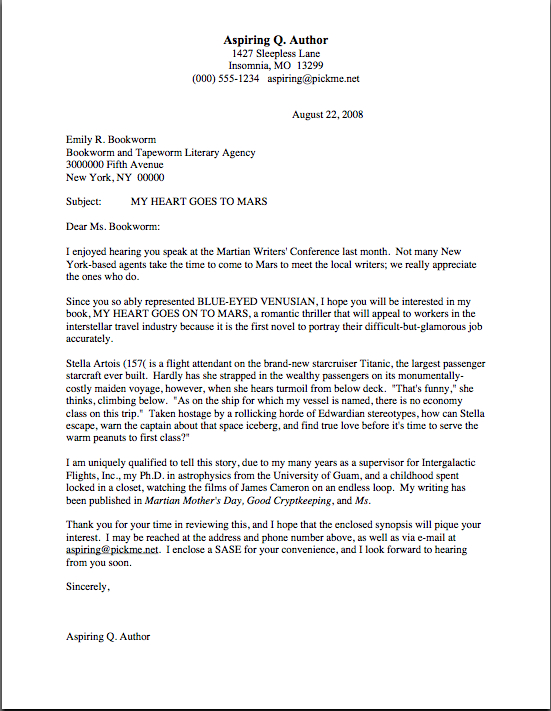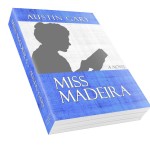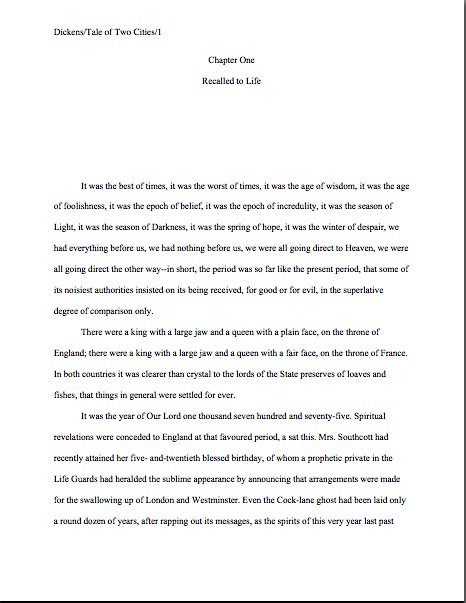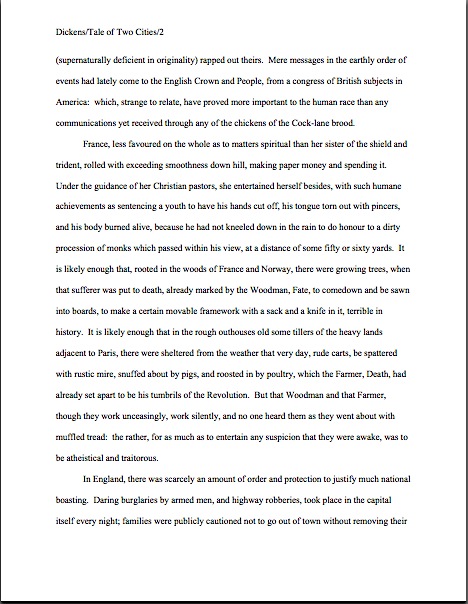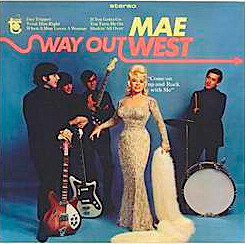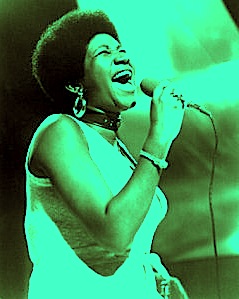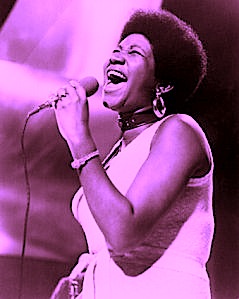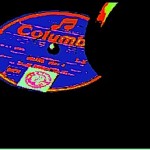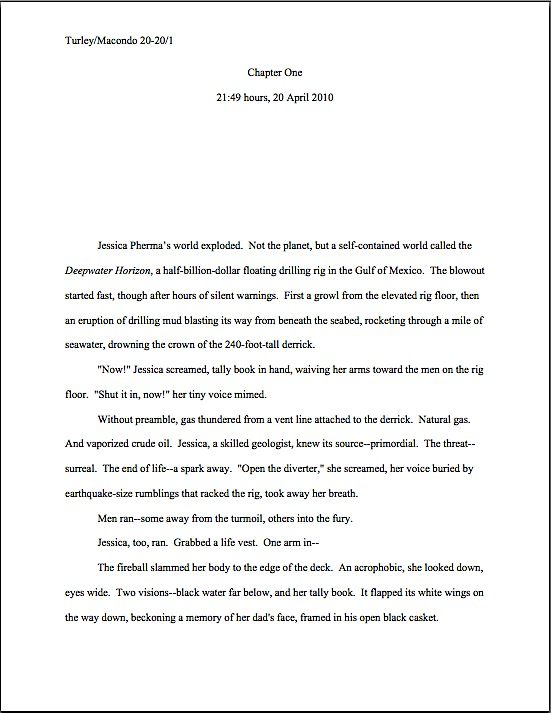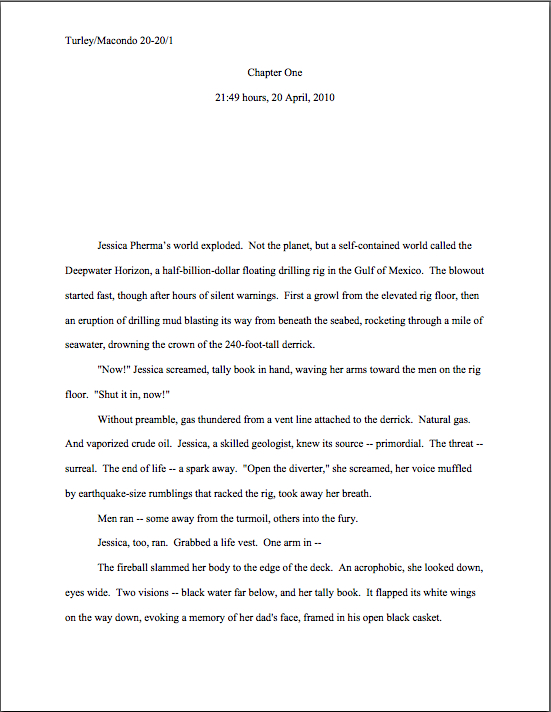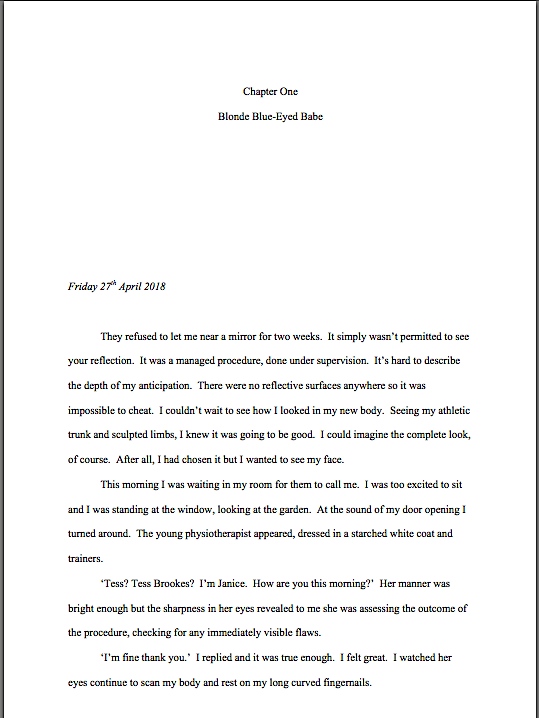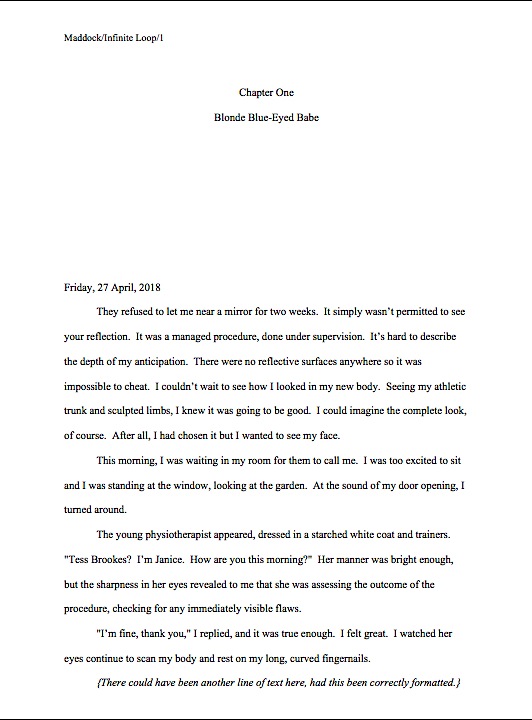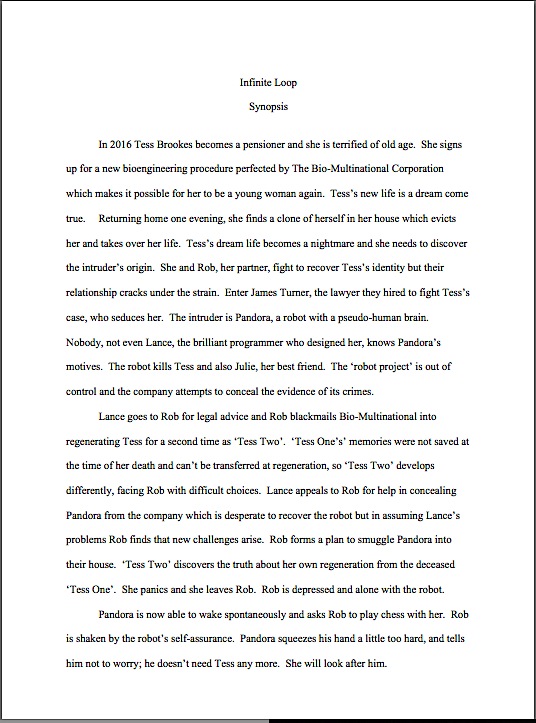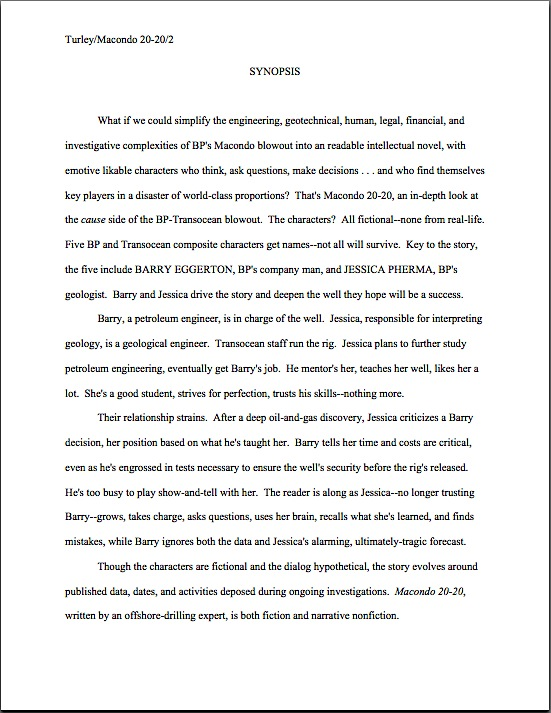
Last time, I threw all of you queriers a bit of a curve ball: in the midst of talking about how to polish a basic query letter — polite salutation, title, book category, brief description, writing credentials/platform for writing the book, courteous sign-off, your contact information, SASE if you’re going to send it via mail — I insisted ordered blandished you into suggested that you write it not in your own good prose, but in the language of the publishing industry.
Why might you want to invest the time in doing that? To elevate a ho-hum query that features just the basics into one that veritably leaps off the incoming mail stack at Millicent the agency screener, the dedicated and often quite poorly paid individual charged with the awesome task of going through the hundreds upon hundreds of queries a good agency receives each week, deciding what tiny fraction fits closely enough with the resident agents’ interests to warrant requesting pages.
Does that sudden flash of blinding light mean that Millicent’s job description caused light bulbs to appear over some of your heads? Or was it something else? “Oh, I was already aware that it was Millicent’s job to reject over 90% of the queries she sees,” some of the abruptly illuminated call out, “but back up a little. Did you just give a formula for a bare-bones query two paragraphs ago? I was so startled that I almost burned my lip on a too-hot latte, as Millicent always sees to be doing.”
My sympathies on your scalded mouth, campers, but I’m afraid I must make a technical correction: what I described above was a list of the information that absolutely must appear in a query letter in order for Millicent to decide to ask for pages; it wasn’t a formula for how to put it all together. This data could be presented in a million different ways — and should be, because as we have discussed, nothing so bores our Millie as the 5,421rst version of the same ostensibly surefire boilerplate query that’s been making the rounds on the Internet this month.
It would behoove you, therefore, to send her something a trifle more original.
I felt half of you tense up, but you have my permission to relax to the point of lolling: you’re beyond basic querying now, my friends, at least if you have been following Queryfest with an open heart and inquisitive mind (or even vice-versa) moved past the quite good query letter we discussed in Part I of this series. I have greater ambitions for you than that. You’re ready to become so conversant with the logic of querying that you could toss out future queries in a relatively pain-free hour or two, instead of an anguish-filled week or month.
And what’s the magic wand that’s going to enable you to make that radical leap forward? Learning how to describe your work as an agent or editor would. The first two steps: nailing down a book category and figuring out who your ideal reader is.
A savvy querier needs to do more than assert that such a reader exists, however; she must provide some evidence of it. Why? Well, no matter how well-read Millicent and her boss are in your chosen book category, unless you happen to have written a manuscript with exactly the same market appeal as a recent bestseller, neither will necessarily have a clear idea of how many potential readers there are for your book.
The more esoteric your claim to your ideal reader’s sympathies, the more likely this is to be the case, by the way. Let’s assume you’ve written a cozy mystery about a left-handed, redheaded sleuth/clog dancer who breaks her foot by tripping over log while running away from a spider. Now, you could say in your query that your novel will appeal to readers of cozy mysteries — but that’s not likely to come as news to an agent who represents that sub-genre, is it? It’s a tautology: cozy mystery buyers buy cozy mysteries, by definition. You could also claim that your book will appeal to left-handed people, or to redheads, but that would be a hard sell: both of these groups are too large and diverse to render such a claim plausible. You could, however, argue persuasively that there are not at present very many mysteries aimed specifically at clog-dancing enthusiasts, spider-fearers, and/or victims of falling accidents.
That’s not a bad argument — perhaps not the best for the work in question, but certainly a means of demonstrating the possible market appeal of this book. Strategically, you could do worse. However, it would definitely be poor strategy to assume that simply mentioning each of these groups would be sufficient to make your case.
Why not? How likely is either Millicent or her boss to be conversant with the specific demographics of that target audience to be able to say instantly, “Oh, terrific — arachnophobia is one of the most common of all phobias, 1 in 3 Americans over 65 will experience a fall in any given year, and clog dancing has been popular for the last four centuries! That would provide a wealth of different promotional approaches for this book!”
Even if an agency denizen did happen to have that particular array of statistics at her ink-stained fingertips, she’s not going to have the time (and probably not the inclination) to do the math. Although it’s fun to picture, isn’t it? “Let’s see,” Millie muses over your query, “assuming that about 30% of readers will be afraid of spiders, and virtually all of them will know somebody who harbors such a fear (insert adding machine operation sounds here)…and that about 10% of the population is left-handed (click, click, click), although of course that includes the ambidextrous and incompletely dominant as well…and about 13% of the current U.S. population is over 65…carry the three…add that to the national clog sales statistics I have at my elbow…”
Not going to happen. So why make Millicent guess?
In response to the hefty percentage of you who just shouted, “Because tracking down those numbers would be a big, fat pain!”: allow me to suggest that if you do not do that research, it’s terribly unlikely that Millicent will. Even if she happens to be a clogging enthusiast, she’s going to appreciate it if you throw some concrete numbers into your query, demonstrating just how big your target market actually is. Not to mention rendering it infinitely easier for Millicent to talk about your book to higher-ups — and, in turn, for an agent to pitch it to anyone at a publishing house.
Why, you gasp? Well, sales and marketing departments expect agents and editors to be able to speak in hard numbers. No matter how much the editors at a publishing house love any given manuscript or book proposal, they’re unlikely to make an actual offer for it unless the sales and marketing folks are pretty enthused about it, too.
So doesn’t it make sense to make sure the agent and editor fighting for your book have that demographic information at their fingertips, when it’s relatively easy for you to put it there?
I sense some ambient eye-rolling. “But Anne,” I hear those of you writing for some of the bigger markets protest. “Surely, everyone with a pulse is aware of how big my particular target audience is and why they would find my book appealing. Wouldn’t it be, you know, a little insulting if my query assumed that the agent wasn’t sufficiently aware of the world around him to know these things?”
Well, yes — if you happen to be a former president of the United States, a movie star recovering from a drug addiction, or a plain, ordinary writer with previous publishing credentials querying a YA book about a teenage girl’s relationship with a vampire and a werewolf, or a middle-grade novel about a young magician left mysteriously to fend for himself, with the assistant of two friends carefully selected to maximize the probability that young readers will be able to identify with one or the other, in the face of ultimate evil that adults are too dim-witted to see. If you are already a household name or have written a clone of a recent best-seller, it is entirely possible that your target market is so self-evident that any agent with a brain would pitch it as, “This memoir gives the inside scoop on the White House,” “This is what it’s like in celebrity rehab,” or, “It’s basically TWILIGHT, but with twist X…”
But the fact is, few books that aren’t really, really derivative of current bestsellers have that obvious a target audience, and if you’re already a celebrity or an ex-president, you’re probably not writing your own query letters, anyway. If your manuscript is original — it is, isn’t it? — you’re probably going to have some ‘splaining to do.
Still don’t believe me? Okay, here’s a parable about what can happen if a writer is vague about her target market’s demographics. Don’t say I didn’t warn you.
Aspiring writer Ermintrude has written a charming women’s fiction manuscript about Trudymin, an American woman in her early forties who finds herself reliving the trauma of her parents’ divorce when she was 12, as well as the trauma of having grown up with an off-beat name. Miracle of miracles, since the book is set in the present day, that makes her protagonist a Gen Xer, as Ermintrude herself is. (“It’s sort of autobiographical,” she admits, but only amongst friends.)
Like the vast majority of queriers, Ermintrude has not thought much about her target market before approaching agent Betheen; she just assumes, and rightly, that she’s written a well-crafted women’s fiction novel. Isn’t it enough to say that it will appeal to women?
Um, no: she’s stunned when Betheen tells her that there’s no market for such a book. But being a bright person, quick on her feet, Ermintrude comes up with a plausible response: “I’m the target market for this book,” she shoots back in an e-mail. (A tactic a rejected querier should NEVER, EVER embrace, by the way, but necessary here for the sake of drama.) “People like me.”
Now, that’s actually a pretty good answer — readers are often drawn to the work of writers like themselves — but it is too vague to convince Betheen. What Ermintrude really meant was:
“My target readership is women born between 1964 and 1975, half of whom have divorced parents. Just under 12 million Americans, in other words — and that’s just for starters. Would you like to hear the demographics on how many of us had oddball names like Sunshine?”
But Betheen heard what Ermintrude SAID in her query and ill-advised follow-up e-mail, not what she MEANT. As they’ve never met, how reasonable was it for Ermintrude to expect Betheen to read her mind?
Given this partial information, Betheen thought: “Oh, God, another book for aspiring writers.” (People like the author, right?) “What does this writer think my agency is, a charitable organization? I’d like to be able to retire someday.”
And what would an editor at a major publishing house (let’s call him Federico) conclude from Ermintrude’s statement? Something, no doubt, along the lines of, “This writer is writing for her friends. All four of them. Next!”
Clearly, being vague about her target audience has not served Ermintrude’s interests. Let’s take a peek at what would have happened if she had been a trifle more specific, shall we?
Ermintrude says: “Yes, there is a target market for my book: Gen Xers, half of whom are women, many of whom have divorced parents, many of whom will have had an elementary school classmate named Zephyr.”
Agent Betheen thinks: “Hmm, that’s a substantial niche market. 5 million, maybe?”
Sounding more marketable already, isn’t it?
But when Betheen pitches it to editor Federico this way, he thinks: “Great, a book for people who aren’t Baby Boomers. Most of the US population is made up of Baby Boomers and their children. Do I really want to publish a book for a niche market of underemployed, recycling-conscientious vegans with little disposable income?”
So a little better, but still, no cigar. Let’s take a look at what happens if Ermintrude has thought through her readership in advance and approaches Betheen with relevant statistics all ready to leap off onto the query page.
Ermintrude says (immediately after describing the book in her query): “I’m excited about this project, because I think my protagonist’s divorce trauma will really resonate with the 47 million Gen Xers currently living in the United States. Half of these potential readers have parents who have divorced at least once in their lifetimes. Literally everybody in that age group either had divorces within their own families as kids or had close friends that did. I think this book will strike a chord with these people.”
Agent Betheen responds: “There are 47 million Gen Xers? I had no idea there were that many. I want to see the manuscript; this has market potential.”
And editor Federico thinks: “47 million! Even if the book actually appealed to only a tiny fraction of them, it’s still a market well worth pursuing. Yes, Betheen, send me that manuscript by your new client.”
The moral of this exciting tale of woe and uproar: even the best book premise can be harmed by vague assertions about its target audience; it can only helped by the query’s talking about in marketing terms.
There is one drawback to using up-to-the-minute demographic statistics, of course — if you end up querying the same project repeatedly over several years (not at all unusual for even very well-written manuscripts, at this point in literary history), you may have to go back and update your numbers. Actually, it’s not a bad idea to reexamine your query’s arguments every so often, anyway. it’s quite easy to fall into the habit of pumping out those queries without really pondering their content — or whether this particular letter is the best means of marketing to that particular agent.
Speaking of which, let’s return to our ongoing query-improvement list already in progress. Take a long, hard look at your letter and ask yourself…
(10) Have I addressed this letter to a specific person, rather than an entire agency or any agent currently walking the face of the earth? Does it read like a form letter?
Some of you just did a double-take, didn’t you? “But Anne,” you cry in unison, and who could blame you? “I’m experiencing déjà vu. Didn’t we already cover this in #5, Is it clear from the first paragraph that I am querying the appropriate agent for my work?”
Well, yes and no. Yes, I made some suggestions last time for some tried-and-true reasons for explaining why approaching a particular agent makes sense for your book. But no, we didn’t discuss how to fix a generic-sounding first paragraph.
Let’s rectify that right now: basically, you fix it by not using the same first paragraph in every query.
As I mentioned in an earlier post in this series, experienced queriers will tweak their basic query letters to personalize them for each agent on their list. Less experienced serial queriers, though, often do not change anything but the first paragraph, address, and salutation between each time they sent out their mailed letters, more or less insuring that a mistake made once will be replicated a dozen times. Copying and pasting the text of one e-mailed query into the next guarantees it.
And those of you who habitually did this were surprised to receive form-letter rejections? The electronic age has, alas, made it much, much easier to be dismissive: never have so many been rejected so much with so few keystrokes. So although it may seem needlessly time-consuming, it’s worth reviewing every single query to ascertain that the opening paragraph speaks specifically to the recipient’s tastes and placement record.
Most aspiring writers don’t even consider doing this — and frankly, it’s easy to see why. Many approach quite a few agents simultaneously, and with good reason. At this point in publishing history, when many agencies don’t even respond to e-mailed queries if the answer is no, waiting to hear back from one agent before approaching the next is poor strategy. Querying every possible agent one at a time can add years to the agent-finding process.
Do I sense some restless murmuring out there? “But Anne,” some of you conference veterans protest, “I heard that some agents will become furious if they find out that a writer is sending out many queries simultaneously. I don’t want to scare them away from my book by breaking their rules right off the bat!”
I agree with the general principle imbedded in this cri de coeur — it’s only prudent to check an agency’s website and/or its listing in one of the standard agency guides to ascertain what precisely the agent you are addressing wants to see in a query packet. The differentials can be astonishing: some want queries only, others want synopses, many ask for pages to be placed in the body of an e-mail, a few ask queriers just to go ahead and send the first 50 pages unsolicited.
What no agency will ever leave off any of its expressions of preference, however, is mention of a policy forbidding simultaneous querying, the practice of sending out queries to more than one agent at a time — if it has one, which is exceedingly rare. Some do have policies against simultaneous submissions, where more than one agent is reading requested materials at the same time, but believe me, the agencies that want an exclusive peek tend to be VERY up front about it.
So if you heard that most agents prefer exclusive queries, you’ve been misinformed — or have been talking to someone who last queried in the mid-1970s.
Rather than hamstringing your querying efforts by assuming that a relatively rare preference is universal, take the necessary few minutes to check each agency’s querying policies before you send them anything. If you can’t find agency-specific guidelines (and you may not; query with SASE is an exceedingly common agents’ guide listing), it’s safe to assume that (a) they’re not expecting solo queries, so (b) you needn’t even mention multiple queries in your letter. Trust me, (c) if the agent wants an exclusive peek at your manuscript, he’ll tell you so point-blank in the request for pages.
This should, I hope, sound somewhat familiar to those of you who have been querying for a while. If not, I’m more than happy to haul out the broken record player again:
There is no such thing as a one-size-fits-all query packet. In order not to run afoul of these wildly disparate expectations, a querier must be willing to do a bit of homework and follow individualized directions.
Fair warning: sometimes an agency’s listing in one of the standard guides, its website, and what one of its member agents will say at a conference are at odds. In the event of a serious discrepancy, don’t call or e-mail the agency to find out which they prefer. Go with the information that appears to be most recent — in my experience, that’s usually what’s posted either on the website or on the agency’s Publisher’s Marketplace page.
I can hear some of you worrying types beginning to gnaw your fingernails down to the elbow, wondering if you sent out multiple queries based upon outdated sets of guidelines, or that the information was coded in a way you did not understand, but again, I would urge you to relax. It’s practically unheard-of for an agent to wake up one fine morning, stretch, and suddenly shout, “Hey, I’m sick of queriers not committing to me from the instant it occurs to them to approach me. I’m going to tell Millicent to dump any query that doesn’t say I’m getting an exclusive look into the recycling bin!”
That’s ridiculous, of course. Many agencies don’t recycle.
Just do your best, and hope for same. If you have checked to ascertain that the agent of your dreams — or at least the next on your list — does not have an exclusivity policy, you should assume that s/he doesn’t. Trust me, if an agent who does prefer an exclusive peek doesn’t want other agents seeing it, s/he will let you know.
Until then, it’s a waste of your valuable time to grant a de facto exclusive to someone who hasn’t asked for it. (For some tips on how to deal with such a request if and when it comes up, please see the EXCLUSIVES TO AGENTS category on the list at right.)
So why does the rumor that that agents secretly crave exclusives (and thus penalize queriers who don’t read their minds and act accordingly) remain so pervasive? Beats me. If I had to guess (and apparently I do), I would say that it is an unintended side effect of agents’ standing up at writers’ conferences and saying, “For heaven’s sake, don’t send out mass queries — if I see a query that’s clearly been sent to every agent in the book, I send straight it into the rejection pile.”
In other words, don’t send out generic queries. They’re just not worth your time — or Millicent’s.
A query letter designed to please all is unlikely to be geared to the specific quirks and literary tastes of any particular agent — one of the many reasons that this shotgun approach seldom works. The other, believe it or not, is that mass submitters often render the fact that they don’t know one agent on their lists from another by sending out what is known in the biz as a Dear Agent letter. As in one that begins:
Dear Agent,
I haven’t the vaguest idea who you are or what you represent, but since the big publishing houses don’t accept submissions from unagented authors, I come to you, hat in hand, to beg you to represent my fiction novel, LEFT-HANDED REDHEAD IN CLOGS. It’s a guaranteed hit with tempestuous coppertops everywhere, and a natural for the talk-show circuit. I enclose a pair of clogs as a gift in the desperate, forlorn hope that a huge, heavy box will be mistaken for a manuscript, and thus this query will end up on someone influential’s desk. Please find me charming?
Why, when there is so much to resent in this (probably quite honest) little missive, would the salutation alone be enough to get this query rejected without reading farther? Well, to folks who work in agencies, Dear Agent means only one thing: the writer who sent it is sending an identical letter to every agent listed on the Internet or in one of the standard agency guides.
Willy-nilly, with no regard to who represents what and consequently who is likely to be interested in the book at hand.
Which means, Millicent reasons, that it is unlikely to the point of mockery that the book being proposed is going to fit the specific requirements and tastes of any of the agents currently domiciled at the agency — and unlikely to the point of rolling around in hysterics on the floor that the querier will have bothered to read the agency’s submission guidelines What’s the hope, then, that requested materials would even remotely resemble professional manuscript pages? And, most agency denizens would additionally conclude, the writer hasn’t bothered to learn much about how the publishing industry works.
The result: virtually any Millicent will simply toss it into the reject pile, if not actually the trash, without bothering to read even the first paragraph. (Dear Agent letter-writers seldom know to include SASEs, alas.)
Since this is such a notorious agents’ pet peeve, I’m going to trouble you with yet another question aimed at making that first paragraph a beautiful case that you — yes, you — are the best possible fit for the agent you happen to be querying at the moment. And to make that case pellucidly clear even to a Millicent who has only 30 seconds or so to devote to each query.
(11) Do I make it clear in the first paragraph of the letter SPECIFICALLY why I am writing to THIS particular agent — or does it read as though I could be addressing any agent in North America?
This is a corollary of the last, of course. To put it another way, writers aren’t the only ones screaming at the heavens, “Why me? Why me?” (Agents scream it, too, but with a slightly different meaning.)
It’s worth taking a look at your query letter and asking yourself if it answers the question: there are hundreds and hundreds of literary agents in the United States alone — why did you choose this one, out of all others, to query? What specifically about this agent’s track record, literary tastes, and/or bio led you to say, By gum, I would like this person to represent my work?
And no, in this context, because she is an agent and I desperately want to sell my book to a publisher is not a reason likely to impress Millicent. She hears it too often.
The best way to justify your agent choice is by mentioning one of the agent’s recent sales. (Recent, in publishing-speak, means within the last five years.) Remember, agents — like most other people — tend to be proud of their best work: if you want to get on their good side, showing a little appreciation for what they have done in the past is just good strategy. Especially if you can honestly compliment them on a project they really loved, or one that was unusually difficult to sell.
I picked this little trick up not at writers’ conferences, but in academia. When a professor is applying for a job, she is subjected to a form of medieval torture known as a job talk. Not only is she expected to give a lecture in front of the entire faculty that is thinking of hiring her, all of whom are instructed in advance to jump on everything she says with abandon, but she is also expected to have brief, private meetings with everyone on the faculty first. If she wants to get their vote, she had better have at least one pithy comment prepared about each and every faculty member’s most recent article, or she’s toast.
It’s every bit as horrible as it sounds, like going through a series of 20 or 30 interviews with authors who want to believe simply everyone in the universe has read their work. Everyone smart, anyway.
Gee, I can’t imagine why I didn’t want to remain in academia. But it did teach me something very valuable indeed: pretty much every human being affiliated with any book ever published likes to be recognized for the fact.
Fortunately, it’s very easy to work a compliment into a query letter without sounding cheesy or obsequious. If the agent you are querying has represented something similar to your work in the past, you have a natural beginning:
Since you so ably represented X’s excellent {fill in recent title here}, I believe you may be interested in my book, TITLE, a {book category} aimed at {target audience}.”
I can feel your blood pressure rising, but again, relax: there are many ways to find out what an agent has represented. Check the acknowledgments of books you like (authors often thank their agents), or check the agency’s website to see whom the agent represents. If all else fails, call your favorite book’s publisher, ask for the publicity department, and ask who the agent of record was; legally, it’s a matter of public record, so they have to tell you.
Actually, with small publishers, this isn’t a bad method for finding out what they are looking to publish. I once had a charming conversation with an editor at a small Midwestern press, who confided to me that when she had acquired the book about which I was inquiring, the author did not yet have an agent. Sensing an opportunity, I promptly pitched my book to her — and she asked me to send her the first fifty pages right away.
Sometimes opportunities are hiding in some unexpected places. Are you presenting your work in a way that invites Millicent to take a chance?
(12) If I met this agent or editor at a conference, or am querying because I heard him speak at one, or picked him because s/he represents a particular author, do I make that obvious immediately? If I picked him purely because he represents my book category, have I at least made that plain?
Queriers often seem reluctant to mention bring up having heard an agent speak, but since such a low percentage of the aspiring writers out there attend conferences (under 4%, according to the last estimate I saw), attending a good one that the agent you’re querying also attended is in fact a minor selling point for your book.
The prevailing wisdom dictates that writers who make the investment in learning how to market their work professionally tend to have more professional work to present. A kind of old-fashioned notion, true, but if you’re a conference-goer, it’s one you should be milking for all it is worth.
I would suggest being even more upfront than this, if the conference in question was a reputable one and you did in fact attend it. Why not write the name of the conference on the outside of the envelope, in approximately the same place where you would have written REQUESTED MATERIALS had you pitched to the agent successfully there?
And if you are e-querying, why not mention the conference in the subject line of the e-mail? Also a good idea to include: the word QUERY.
If you have not heard the agent speak at a conference, read an article she has written in a writer’s magazine or online, or noticed that your favorite author thanked her in the acknowledgments of a book you liked — all fair game to mention in the first line of your query — don’t give in to the temptation not to personalize the first paragraph. Be polite enough to invent a general explanation for why you added her to your querying list. Something like this will work just find
Since you represent such an interesting array of debut fiction about women in challenging situations, I hope you will be interested in my novel…
(13) Am I sending this query in the form that the recipient prefers to receive it? If I intend to send it via e-mail, have I quadruple-checked that the agency accepts e-mailed queries? If I am sending it via regular mail, have I checked that the agency still accepts paper queries?
Stop cackling, hard-core web fiends. The publishing world runs on paper — even as I write this, it’s still far from unusual for a prestigious agency not to accept e-submissions at all. Even agencies with websites (which not all of them maintain, even today) that routinely accept electronic submissions often employ agents who prefer paper queries, even from writers residing in foreign countries for whom getting the right stamps for the SASE is problematic.
Double-check the agency’s policy before you e-query. This information will be in any of the standard agency guides, and usually on the website as well. If you’re in doubt, query via regular mail — strategically, it’s a better idea, anyway.
Why? Glad you asked.
it’s far, far less work to reject someone by the press of a single button than by stuffing a response into a SASE. Also, the average reader scans words on a screen 70% faster than the same words on paper. Thus, a truly swift-fingered Millicent can reject 50 writers online in the time that it would take her to reject 10 on paper.
The relative speed of scanning e-queries is why, in case you’re wondering, quite a few of the agencies that actively solicit online queries tend to respond more quickly than those that don’t. Or not at all — which means that it’s doubly worth your while to check an agency’s policy on responding to e-queries before you approach them; many have policies that preclude responding to a querier if the answer is no.
“But Anne,” I hear many of you protest, “what happens if I accidentally send an e-query to an agent who doesn’t like them, or a paper query to one who prefers to be approached electronically? That won’t result in an automatic rejection, will it? It’s not as though I did it on purpose.”
I’m afraid intent doesn’t matter much in this instance, but no, these are not necessarily instant-rejection offenses. They often are, though, for obvious reasons.
Oh, it’s not so obvious? Okay, let me ask you: who would you prefer to read your letter, an agent calmly going through a stack (or list) of queries, or an agent whose first thought upon seeing your epistle is, “Oh, God, not another one! Can’t any of these writers READ? I’ve said in the last ten years’ worth of Herman’s Guides that I don’t want to be queried via e-mail!”
I don’t know about you, but given my druthers, I would select the former.
Call me old-fashioned, but I believe that just as it’s polite to address a person the way he prefers to be addressed, rather than by a hated nickname, a courteous writer should approach an agent in the manner she prefers to be approached. Those with strong preferences either way seldom make a secret of it; verify before you send.
And before anyone out there asks: yes, most agents will assume that a writer worth having as a client will have gone to the trouble of learning something about their personal preferences. If they have expressed a pet peeve in one of the standard agency guides, been interviewed about it, or have written about it in a blog, they will assume that you are aware of it.
Google is your friend, in other words. Take the 5 minutes to check before you query. While we’re on the subject of double-checking, allow me to sneak in one more quick question before I sign off for the night:
(14) Am I absolutely positive that I have spelled the agent’s name correctly, as well as the agency’s? Am I addressing the agent of my dreams as Dear Ms. Smith, rather than Hey, Amy? Am I positive that the letter I have addressed to Dear Mr. Smith shouldn’t actually read Dear Ms. Smith? Heck, am I even sure that I’m placing the right letter in the right envelope?
I hear some titters out there, but you wouldn’t BELIEVE how common each of these gaffes is. The last is usually just the result of a writer’s being in a hurry to get the next set of queries in the mail, and tend to be treated accordingly, but the first two constitute major breaches of etiquette.
And yes, an agent with a first name that leaves gender a tad ambiguous is every bit as likely to resent an incorrect salutation as a Rebecca or Stephen would. Often more, because a Cricket, Chris, or Leslie constantly receives queries apparently addressed to someone of the opposite sex. This type of annoying mix-up has led to more agencies posting pictures of their agents on their websites than you’d expect.
If you’re in serious doubt — faced with a grainy photo, no photo at all, an agent with a name like Bo, etc. — call the agency and ask point-blank whether the agent is a Mr. or Ms. (Quick note for those querying US agents from other parts of the world: currently, Mr. or Ms. are the only two polite options, unless the person in question happens to be a doctor or a professor. Unless a woman makes a point of identifying herself as a Miss or Mrs., Ms. is the proper salutation.)
I know: you’ve heard 4500 times that a writer should never call an agency until after she has a signed representation contract in hand or the agent has left a message asking him to call back, whichever comes first. While it is quite true that allowing the agent to set the level of familiarity in the early stages of exchange is good strategy, most offices are set up to allow a caller to ask a quick, anonymous question, if she’s polite about it. As long as you don’t ask to speak to the agent personally and/or use the occasion to pitch your book, you should be fine.
Have you noticed how many of these tips boil down to some flavor of be clear, do your homework, and be courteous? That’s not entirely coincidental: as odd as it may seem in an industry that rejects so many talented people so brusquely, manners honestly do count in this business.
As my grandmother was fond of saying, manners cost nothing. But as I am prone to tell my clients and students, not exhibiting courtesy can cost an aspiring writer quite a lot.
So sit up straight, brush your teeth, and help little old ladies across the street; it will be great practice for working with an agent or editor. Keep up the good work!

